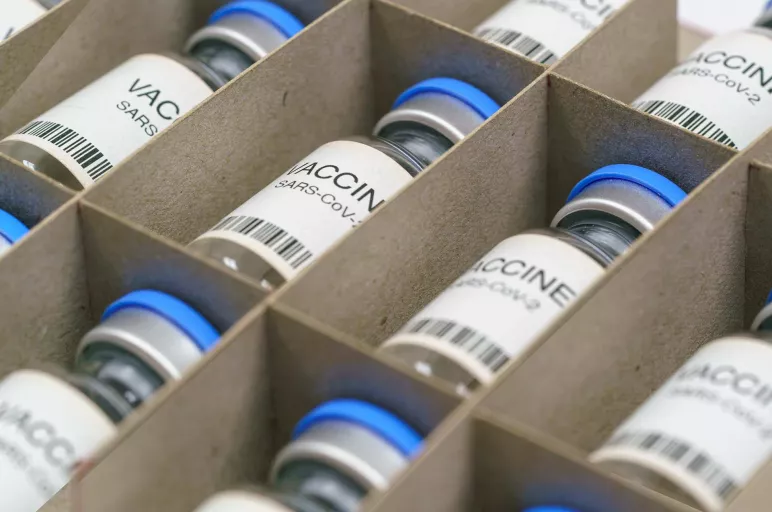
3 Crucial Supply Chain Lessons for COVID-19 Vaccine Rollout
- Effective collaboration is essential – for all supply chains
- Supply chains must be flexible to meet unique challenges
- Digitalization of the supply chain supports those requirements
January 22, 2021 | Supply Chain Strategy
Since the first COVID-19 vaccines were approved in December last year, vaccine manufacturers have had to develop novel supply chain strategies to handle speedy production as well as safe distribution of tens of millions of life-saving doses.
With limited information on the stability of the pharmaceutical components on hand due to the accelerated vaccine development process, cold-chain equipment and facilities became crucial links in the complex supplier network.
In light of that need, vaccine makers began sourcing dry ice along with the equipment to produce it. And the other nodes in the supply chain, such as vaccine distributors and pharmacies, have looked into sourcing ultra-cold freezers from ice cream manufacturers to keep the vaccines at the required low temperatures.
These are just some of the challenges the developed world is facing with regards to producing and distributing the COVID-19 vaccines. Developing countries with limited access to cold-chain technology are likely to have it even tougher.
The complexities in getting a new vaccine supply chain running efficiently underscore some larger lessons for how supply chains operate in the new normal of the post-pandemic world.
3 Lessons Supply Chains Can Learn From the COVID Vaccine Rollout
1. Complexity isn’t going away.
As vaccine manufacturers and distributors have discovered, supply chains are increasingly complex systems that generate their own unique challenges. Components must be stored, shipped and delivered at low temperatures for millions of vaccine doses that need to be administered – and then administered again to achieve the right efficacy. These complexities of supply chains are not going to disappear, no matter what strategies enterprises adopt to manage the risks that complexity brings with it.
2. Supply chain collaboration is more important than ever.
Across all tiers of the supply chain, effective and efficient collaboration is essential. To cope with new problems and break down the silos that tend to develop across enterprises, the role of a supply chain management software platform becomes crucial given its ability to orchestrate the elements harmoniously.
3. Flexibility is a critical supply chain capability.
This is driven by a mindset of innovation and creativity, as seen in how companies looked to new avenues for the necessary cold-chain equipment. Flexibility is also enabled by supply chain software, which helps enterprises identify potential bottlenecks and implement solutions. And that will make them more resilient to future disruptions.
The Growing Need to Digitalize Supply Chains
As the unique strategies developed to resolve the COVID-19 vaccine production and delivery challenges show, the transformation of supply chain management has become imperative in today’s volatile business environment.
By digitalizing supply chains, getting a handle on diverse data streams, and harnessing analytics to better predict potential issues and outcomes, companies can strengthen their supply chains and take advantage of the lessons learned from the pandemic.
Learn more about supply chain strategies for COVID-19 vaccine in this GEP white paper.
Frequently Asked Questions
Vaccine logistics and cold chain management companies have had to develop novel supply chain strategies to handle speedy production and safe distribution of tens of millions of life-saving doses. The vaccine supply chain challenges include limited information on the stability of the pharmaceutical components on hand due to the accelerated vaccine development process.
Cold chain management is a list of rules and procedures that dictate the proper storage and distribution of vaccines to health companies.



